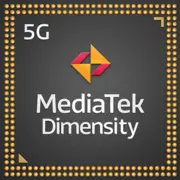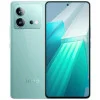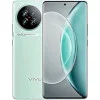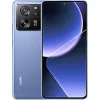MediaTek Dimensity 9200 Plus

MediaTek Dimensity 9200 Plus: Power and Efficiency in Your Pocket
April 2025
Modern smartphones demand from processors not only high performance but also the ability to balance power consumption, heat dissipation, and support for new technologies. The MediaTek Dimensity 9200 Plus, introduced in early 2024, has responded to these challenges. Let's explore why this chip remains relevant in 2025 and who it is suited for.
1. Architecture and Process Technology: Innovations in Detail
CPU: 8 Cores and 4nm Technology
The Dimensity 9200 Plus is built on the ARMv9 architecture and includes 8 cores divided into three clusters:
- 1× Cortex-X3 at 3.35 GHz for heavy tasks (gaming, rendering).
- 3× Cortex-A715 (up to 2.85 GHz) — a balance between performance and energy efficiency.
- 4× Cortex-A510 (1.8 GHz) — background processes for battery savings.
The use of 4nm TSMC process technology (N4P) has reduced power consumption by 22% compared to its predecessor (Dimensity 9000) and improved transistor density. This means less heat generation even under peak loads.
GPU: Mali-G715 Immortalis MP11 — Gaming at a New Level
The Mali-G715 Immortalis MP11 graphics processor supports hardware ray tracing (previously available only on PCs), improving the realism of shadows and reflections in games. The 11 compute units (MP11) operate at a frequency of up to 950 MHz, ensuring smooth FPS in projects like Genshin Impact or Honkai: Star Rail.
Cache and Memory
The 1 MB L2 cache speeds up data processing, while support for LPDDR5X (8533 Mbps) and UFS 4.0 ensures instant app loading and smooth multitasking.
2. Performance: From Gaming to AI
Gaming
In tests of Genshin Impact (Ultra settings, 60 FPS), the Dimensity 9200 Plus demonstrates stability without dips, thanks to optimized thermal design. Support for 144 Hz and 2K+ resolution makes it a favorite in gaming smartphones like the ASUS ROG Phone 8 (price: starting at $899).
Multimedia
The chip decodes video in 8K/60 FPS (including the AV1 codec), which is important for streaming. The built-in Imagiq 890 processor enhances photographic quality: even in low-light conditions, images retain detail, while stabilization eliminates "shakiness" in 4K videos.
AI Tasks
The APU 690 (AI Processing Unit) accelerates neural network operations: real-time object recognition, portrait enhancement via Semantic Segmentation, and low-latency voice assistants. For example, the app Adobe Lightroom Mobile processes filters 30% faster than on the Snapdragon 8 Gen 2.
Power Consumption and Heating
With a TDP of 8W, the chip is more energy-efficient than many competitors. In surfing mode, a smartphone with a 5000 mAh battery lasts up to 14 hours, while in gaming, it lasts about 5–6 hours. The Smart Cooling 3.0 technology distributes the load among cores, preventing overheating.
3. Built-in Modules: Speed and Reliability of Connectivity
5G and 4G
The built-in UltraSave 3.0 modem supports Sub-6 GHz and mmWave, providing speeds of up to 7.5 Gbps. This allows a 4K movie to be downloaded in 10–15 seconds.
Wi-Fi 7 and Bluetooth 5.3
Support for Wi-Fi 7 (up to 40 Gbps) and MLO (Multi-Link Operation) ensures a stable connection even in congested networks. Bluetooth 5.3 with LE Audio improves sound quality in wireless headphones and reduces latency.
Navigation
The chipset works with GPS (L1+L5), GLONASS, Galileo, and BeiDou, providing accuracy of up to 1 meter. This is especially useful for mapmakers and trekking enthusiasts.
4. Comparison with Competitors: Who Are the Leaders?
- Snapdragon 8 Gen 3 (2024): Better in single-threaded performance (Geekbench 6 Single Core: ~2200), but the Dimensity 9200 Plus excels in multi-threading (5576 vs 5350) and energy efficiency.
- Apple A17 Bionic: A leader in optimization (Geekbench 6 Multi Core: ~6100), but limited by the iOS ecosystem and expensive devices (iPhone 15 Pro from $1099).
- Exynos 2300: Falls behind in gaming due to a less powerful GPU (Samsung Xclipse 940 vs Mali-G715).
Conclusion: The Dimensity 9200 Plus offers the best price-performance ratio for Android devices.
5. Use Cases: Who Is It Made For?
- Gamers: Maximum graphics settings, gamepad support, and streaming.
- Content Creators: 8K shooting, fast video export, professional photo filters.
- Everyday Tasks: Instant interface response, simultaneous operation of 10+ applications.
6. Pros and Cons
Strengths:
- High performance in gaming and multimedia.
- Support for Wi-Fi 7 and 5G mmWave.
- Energy efficiency (up to 8 hours of screen time).
Weaknesses:
- No devices with 4K screens (chip limitation — 2K+).
- Less optimization for some studio applications (e.g., DaVinci Resolve Mobile).
7. Tips for Choosing a Smartphone
- Cooling: Look for models with vapor chambers (e.g., RedMagic 9 Pro).
- Display: AMOLED with a refresh rate of 120–144 Hz and HDR10+.
- Battery: At least 5000 mAh with 100+ W charging.
Popular Models of 2025:
- Vivo X100 Pro+ ($849) — camera with 10x zoom.
- Xiaomi 14 Lite ($699) — a balance of price and features.
8. Conclusion: Who Is the Dimensity 9200 Plus For?
This processor is the choice for those seeking flagship performance without paying a premium for a brand. It is ideal for gamers, mobile photographers, and users who value stable connectivity. With smartphone prices starting at $700, you receive top-notch technologies for 2024–2025, with room for the future. If you’re not ready to spend $1000+ on an iPhone or Galaxy S25, the Dimensity 9200 Plus is a sensible alternative.
Basic
3x 3 GHz – Cortex-A715
4x 2 GHz – Cortex-A510
GPU Specifications
Connectivity
Memory Specifications
Miscellaneous
Benchmarks
Phones with Dimensity 9200 Plus







Comparison of Devices with Dimensity 9200 Plus
Compared to Other SoC
Related SoC Comparisons
Share in social media
Or Link To Us
<a href="https://cputronic.com/soc/mediatek-dimensity-9200-plus" target="_blank">MediaTek Dimensity 9200 Plus</a>

